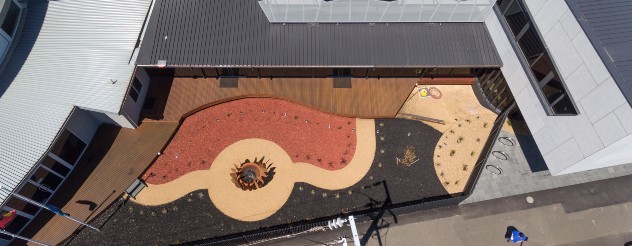Webinar: Protecting Victorian Heart Hospital helipad flight paths
This online information session discussed changes to the Monash Planning Scheme to protect helicopter flight paths at the Victorian Heart Hospital.
Celebrating NAIDOC Week 2022
NAIDOC Week website‘The relationship between Aboriginal and Torres Strait Islander peoples and non‑Indigenous Australians needs to be based on justice, equity, and the proper recognition of Aboriginal and Torres Strait Islander peoples’ rights.
'Get Up! Stand Up! Show Up! with us to amplify our voices and narrow the gap between aspiration and reality, good intent and outcome.’
A new medical facility for the Dja Dja Wurrung community
We’re supporting the growing Aboriginal community in Bendigo with more than $7.1 million in funding from the Regional Health Infrastructure Fund for a new purpose-built medical facility.
The facility will help the Bendigo and District Aboriginal Co-operative to provide comprehensive care to the local Aboriginal community. With their current medical facility at capacity, the new facility will provide BDAC with more space for clinicians to do their work.
About the Bendigo and District Aboriginal Co-operative (BDAC)
BDAC represents and provides services to the Dja Dja Wurrung community (the Jaara people) and Aboriginal and Torres Strait Islander residents living in the City of Bendigo. Around 1,850 Aboriginal people live in the area. The co-operative also supports Aboriginal people in the surrounding districts of Boort, Redesdale and Creswick.
BDAC provides a range of important health and social support services to the local community.
They include:
- a bulk billing medical clinic
- allied health appointments
- alcohol and other drug programs
- mental health and wellbeing support
- legal representation
- career pathways.
About the new medical facility
The new purpose-built mixed medical facility will feature 10 consulting rooms, three allied health rooms and six interview rooms.
It will also include:
- a triage room
- pharmacy
- a kids play area
- community space
- gym
- quiet spaces including a library
- kitchen
- staffroom.
Architects Billard Leece Partnership were recently appointed to design the medical facility.
The project will be delivered by BDAC in partnership with the Victorian Health Building Authority.
This project was funded through the Regional Health Infrastructure Fund. Now worth $790 million, the fund provides government funding to rural and regional health services and agencies across Victoria. The funding helps these services to continue to provide safe and efficient care to local communities. It is the largest program of its type in Victoria, having funded more than 480 projects since 2016.
You can learn more about the work BDAC does on the Bendigo and District Aboriginal Co-operative website.
Supporting Aboriginal health

We have previously worked with communities on the Bendigo Hospital Aboriginal support area, as well as the Ballarat and District Aboriginal Co-operative (BADAC) Medical and Regional Health Hub.
Learn more about how we work with Aboriginal communities in our article Designing for cultural safety.
It’s NAIDOC Week! This week we’re celebrating the rich history, diverse cultures and achievements of Aboriginal and Torres Strait Islander peoples.
NAIDOC Week celebrations are held across Australia in the first week of July each year. They’re an opportunity for all Australians to learn about First Nations cultures and histories, and participate in celebrations of the oldest, continuous living cultures on earth.
The theme for 2022 is ‘Get up! Stand up! Show up!’. It’s about committing to support institutional, structural, collaborative and cooperative reforms. It’s also a reminder to celebrate the many who have driven and led change in our communities over generations.
This year’s theme honours the people who have been the heroes and champions of change, equal rights and human rights.
Behind the build: Healthcare facilities across Victoria
Look behind the scenes
Bendigo Hospital – five years on
Construction of the $630 million Bendigo Hospital was completed in June 2018, and it has forever changed the skyline of the city of Bendigo.
Life-saving equipment for Victorian hospitals
Having the latest life-saving medical equipment is vital for health services so they can continue providing world-class healthcare for all Victorians.
Modular construction in healthcare design
Modular construction can reduce costs and speed up construction times, allowing facilities to open earlier and treat patients faster.
Expanding a busy major hospital
Explore how we expanded the busy Monash Medical Centre emergency department to help treat more people needing emergency care.
Subscribe to stay up-to-date

Stay up-to-date on our announcements and projects by signing up to our online newsletters.
The Victorian Health Building Authority is responsible for the planning and delivery of the Victorian Government’s multibillion-dollar health infrastructure program.
Our work includes planning and building:
- new hospitals
- ambulance stations
- aged care facilities
- mental health facilities.
We also redevelop hospital facilities, as well as replace and upgrade engineering infrastructure and medical equipment.
See how our infrastructure projects and programs come together across the state to support world-class healthcare for all.




